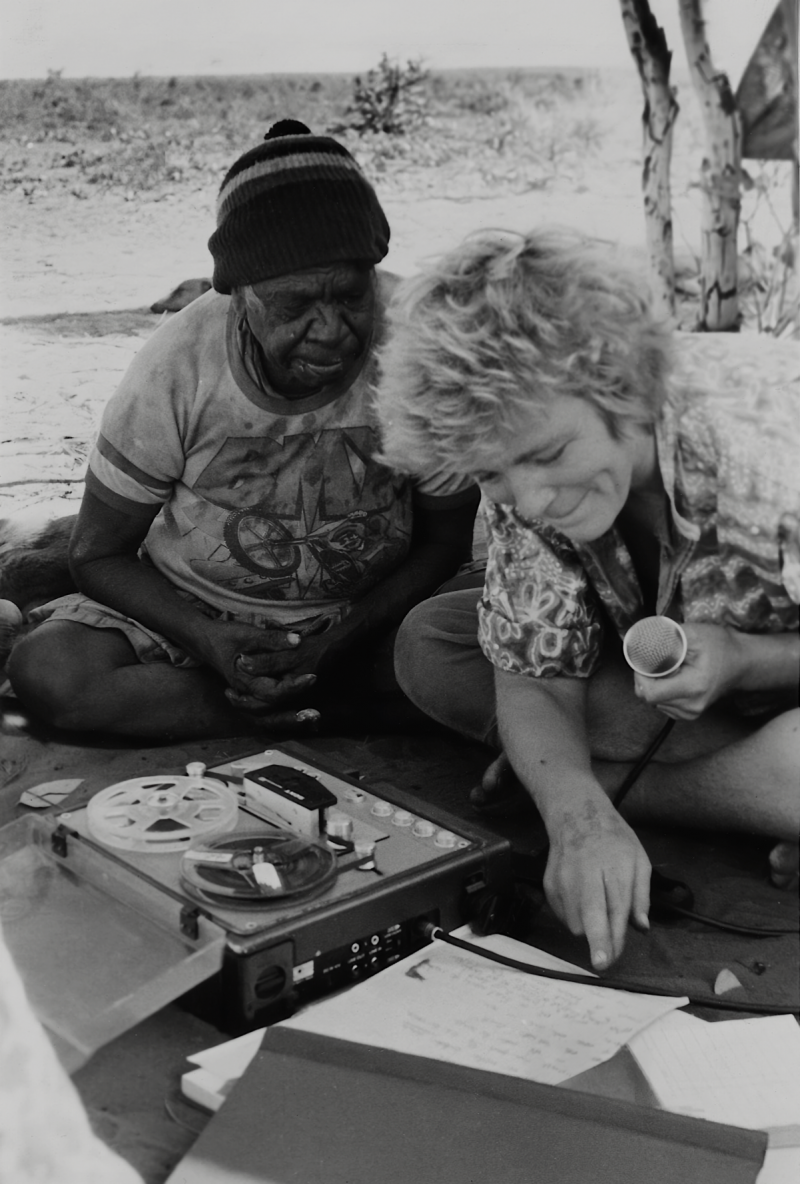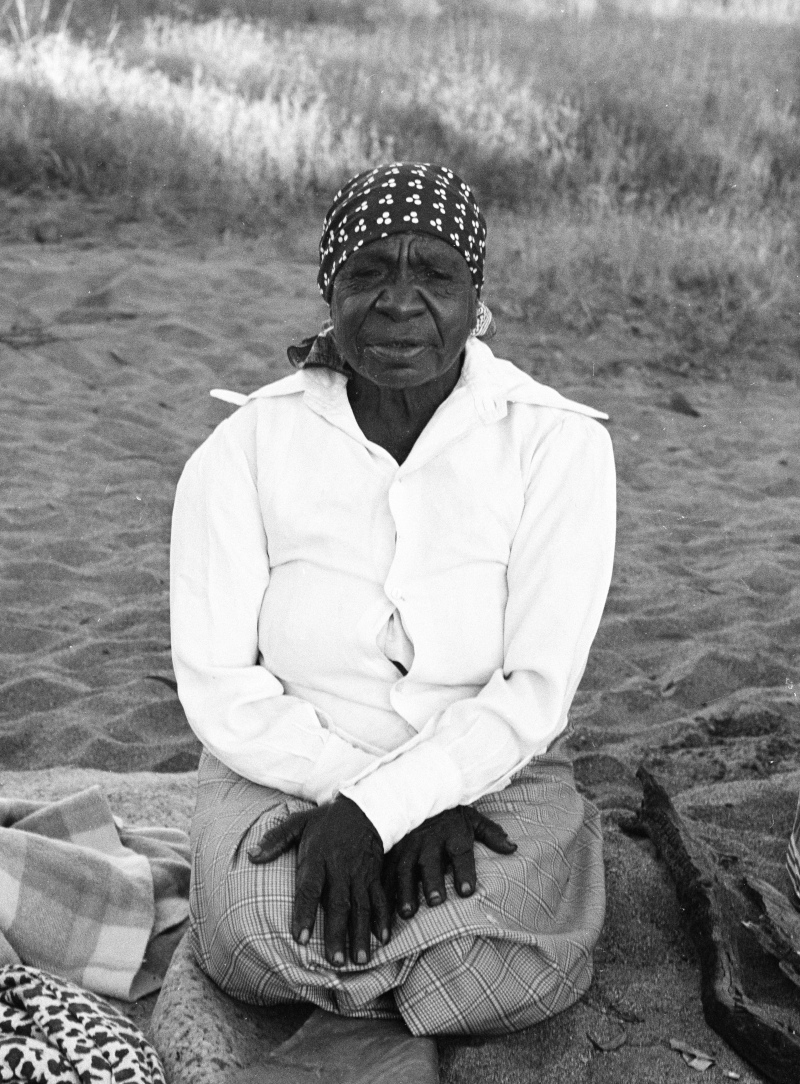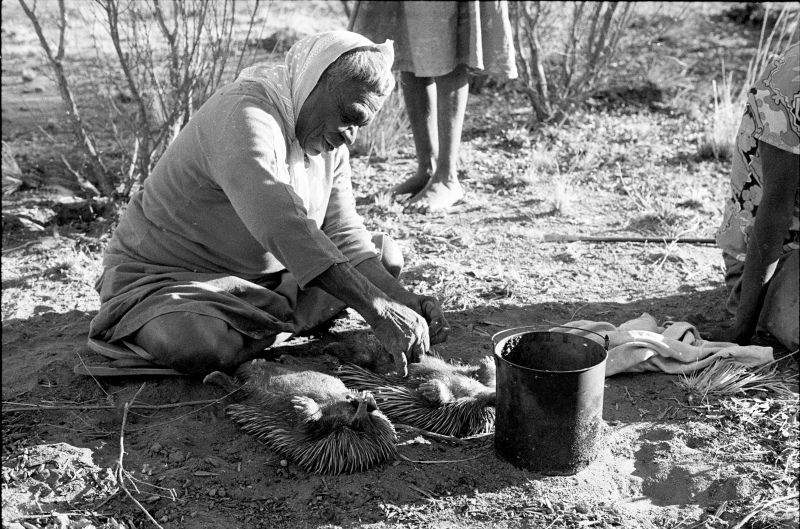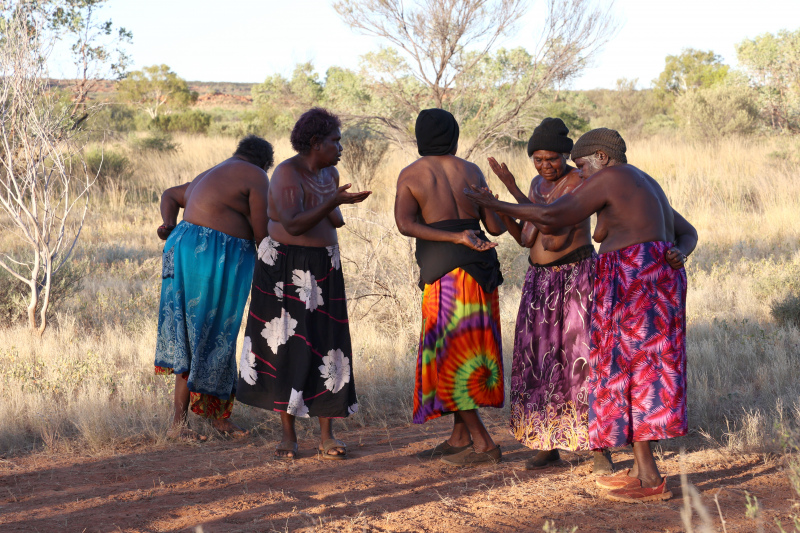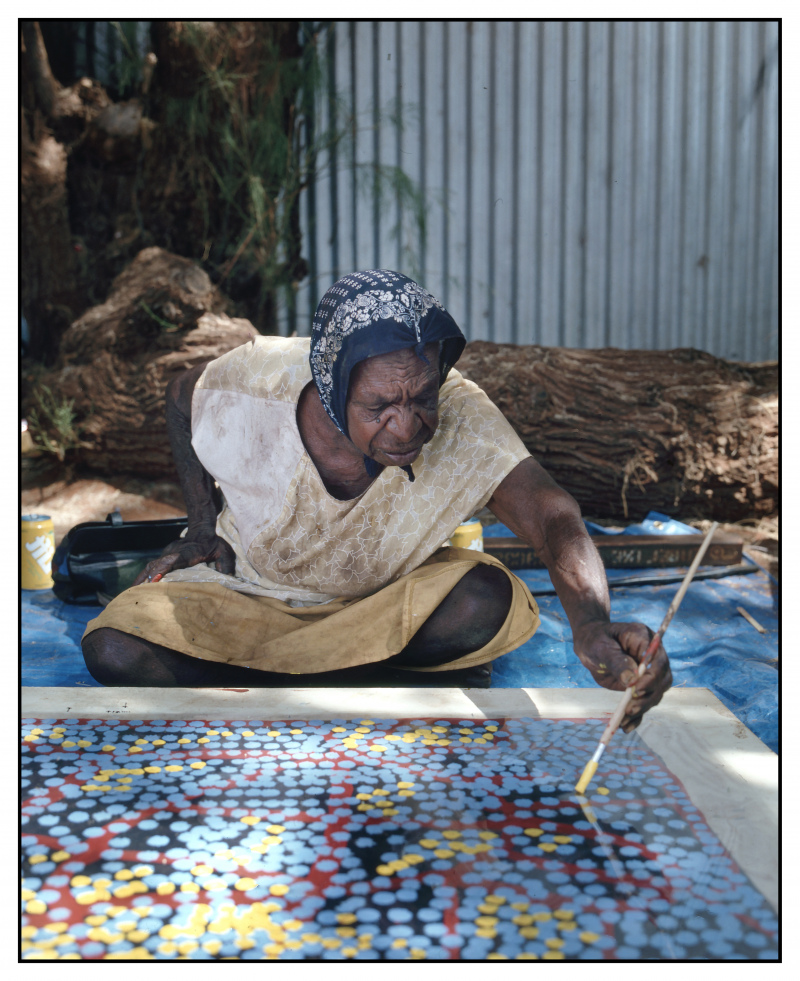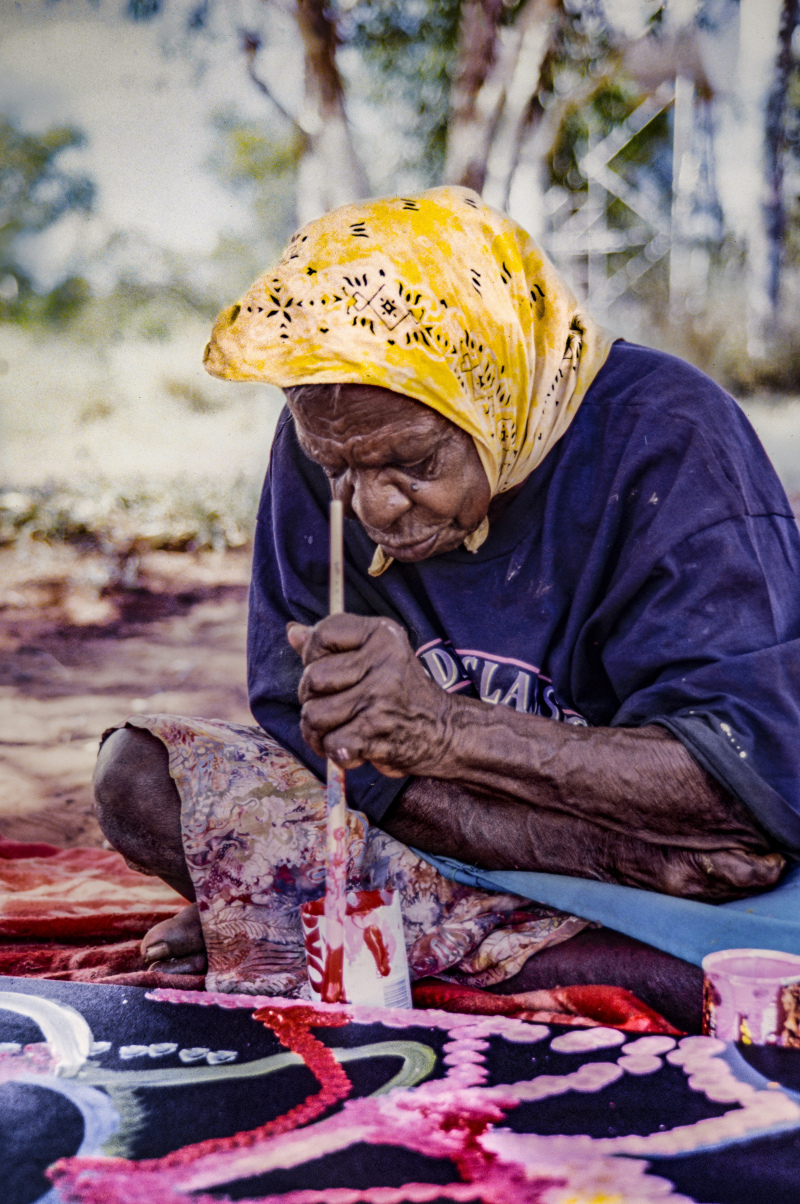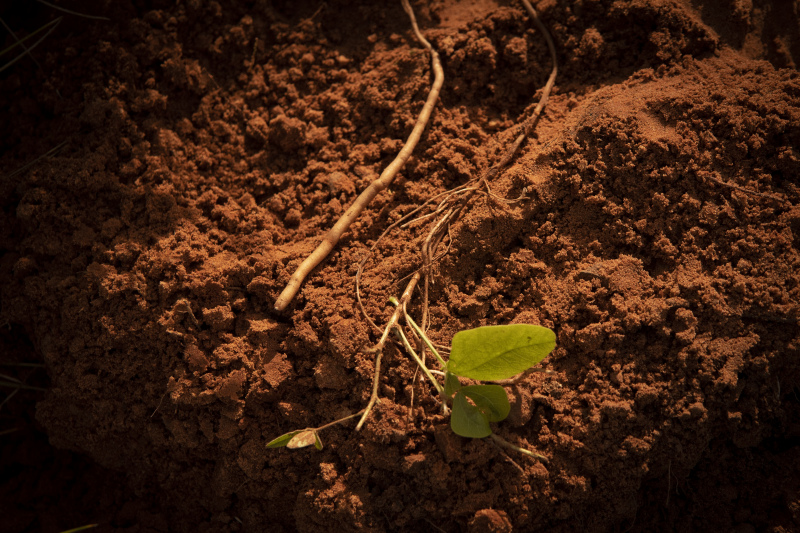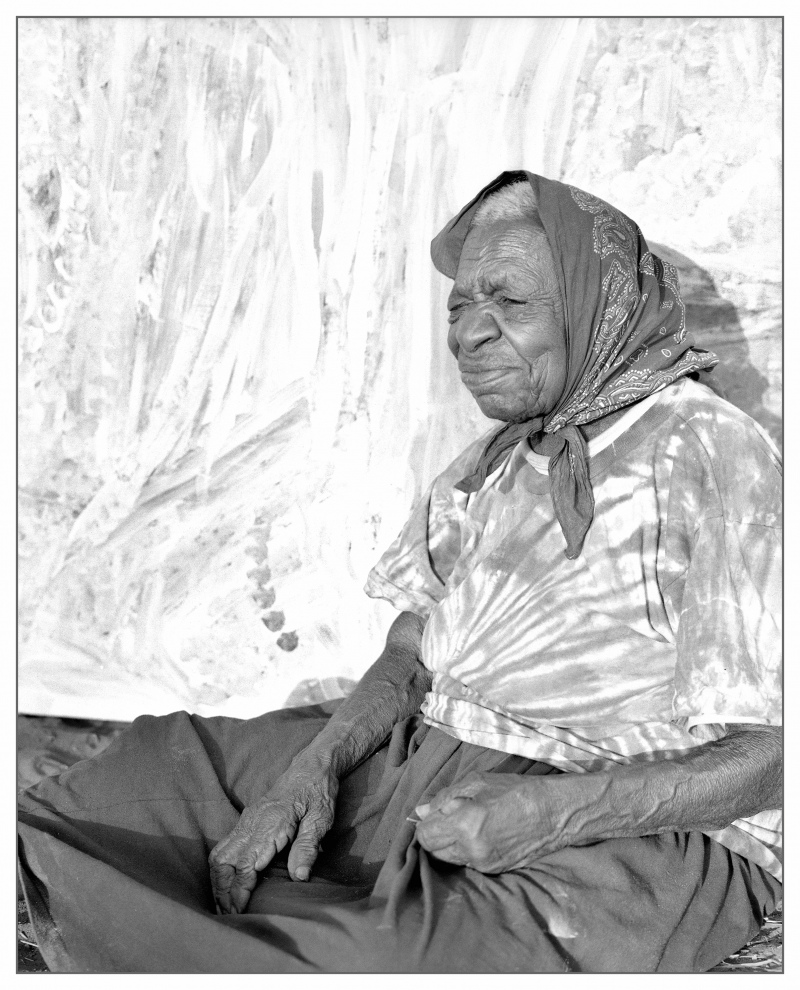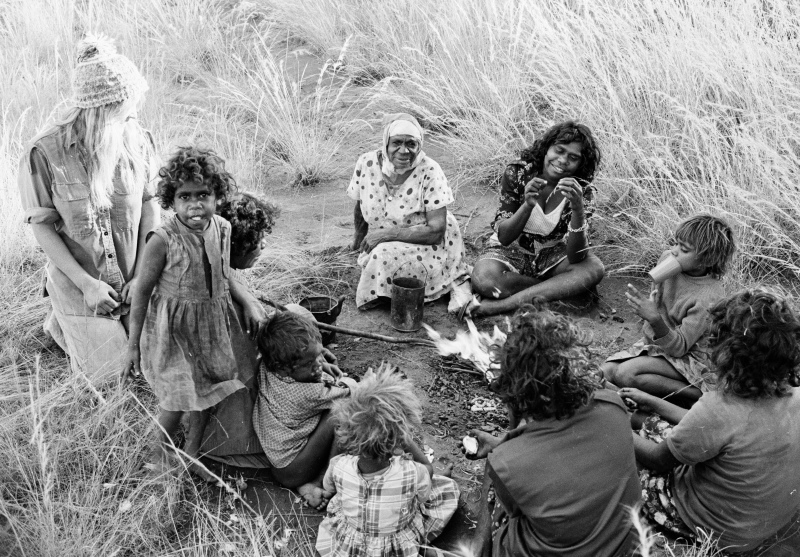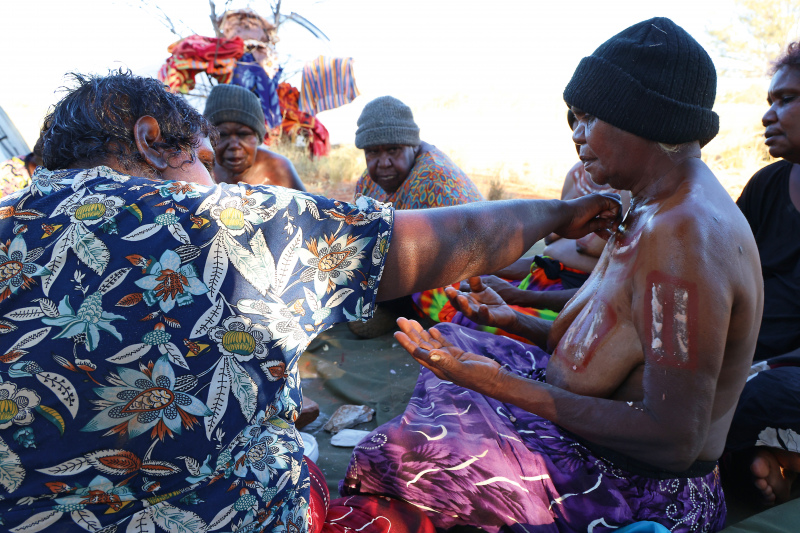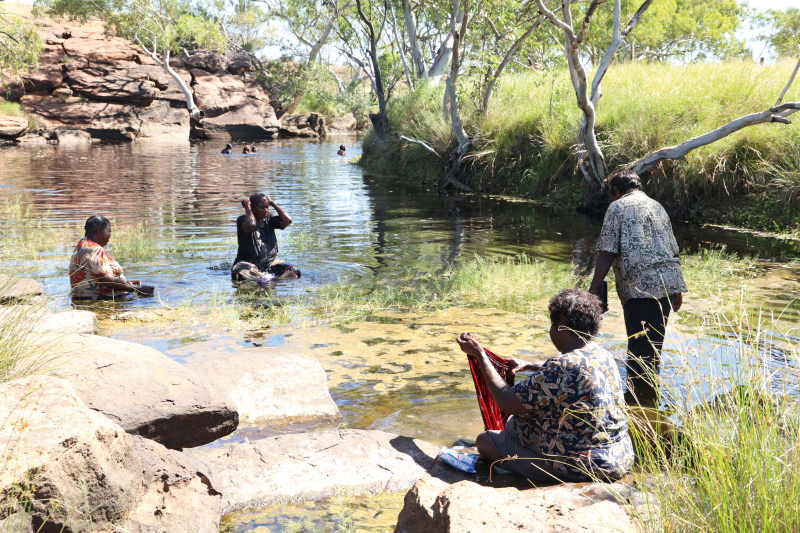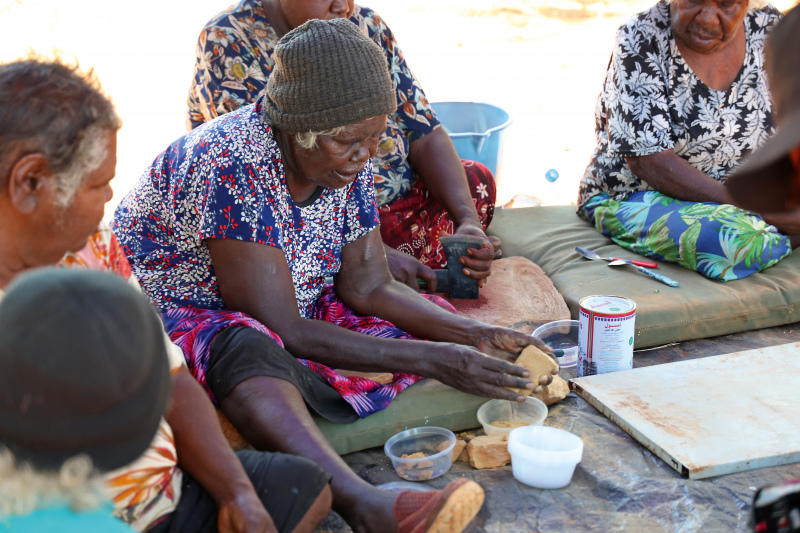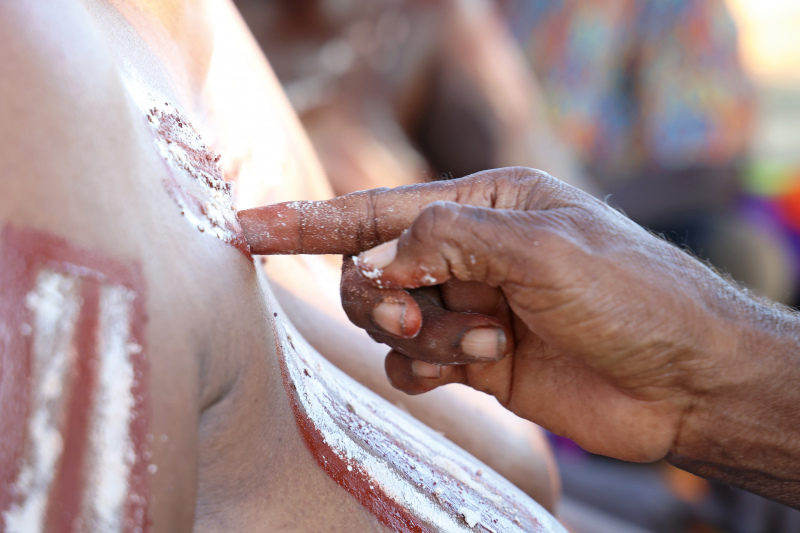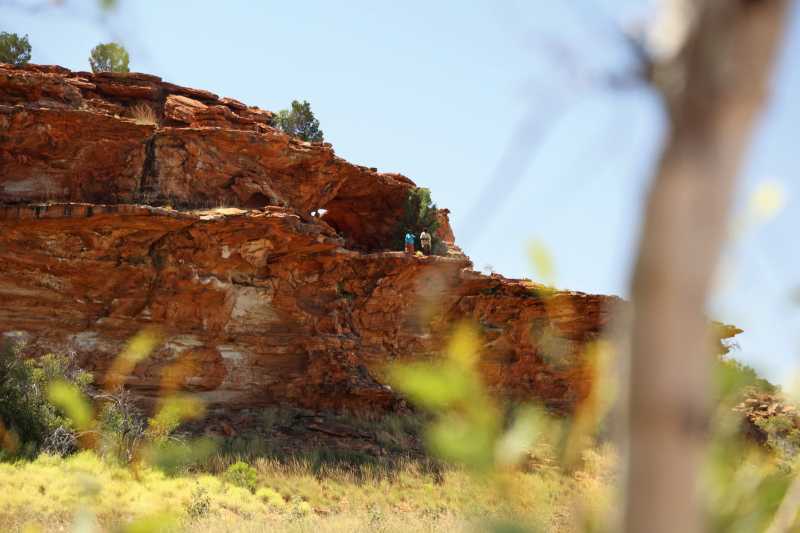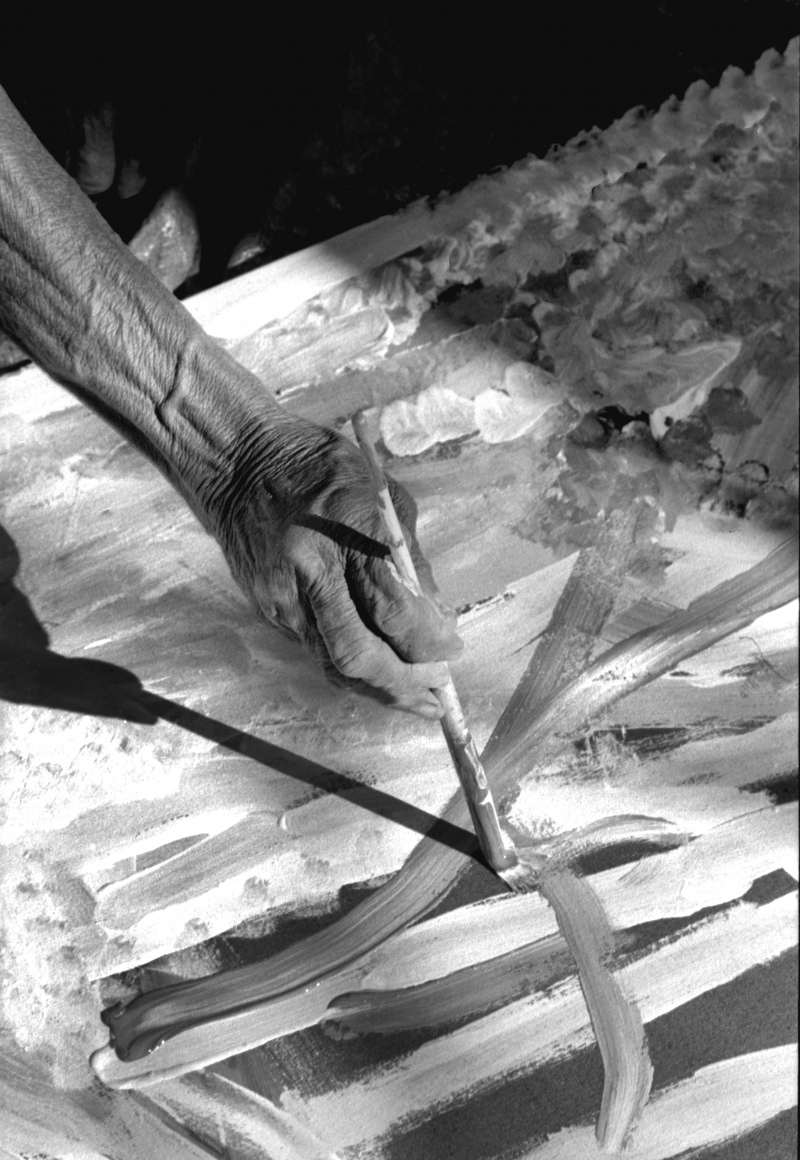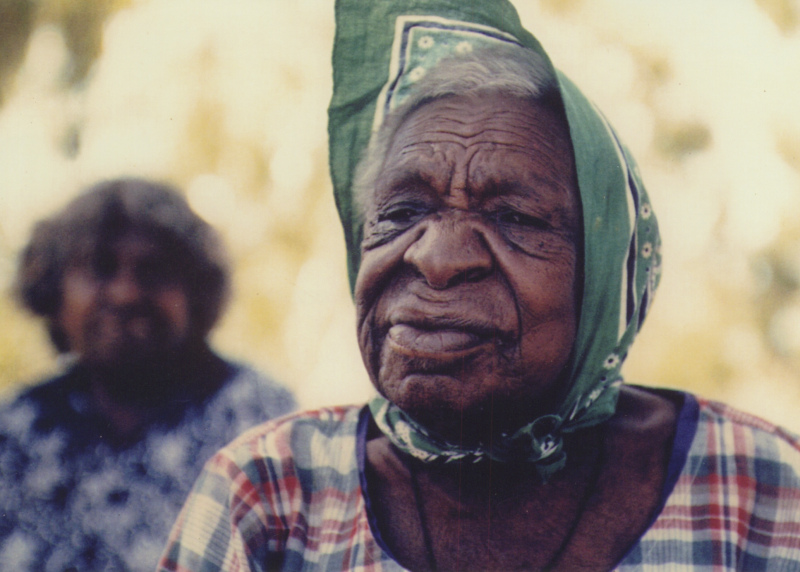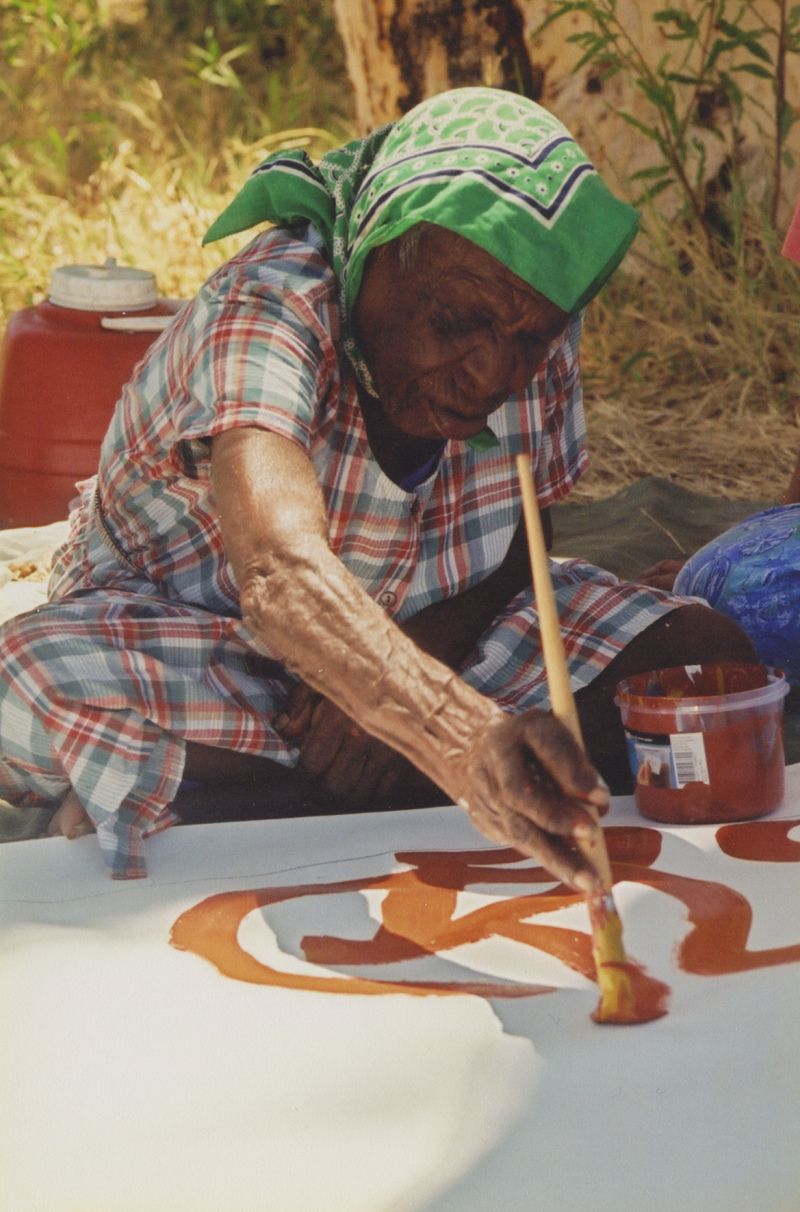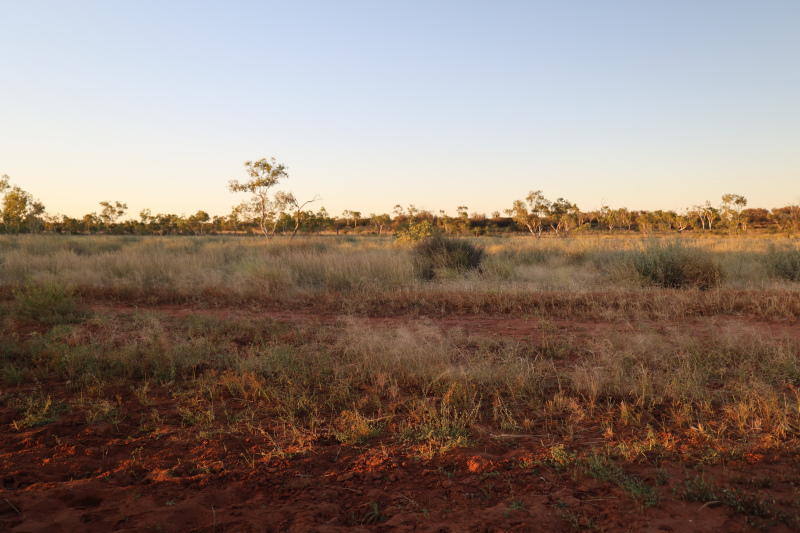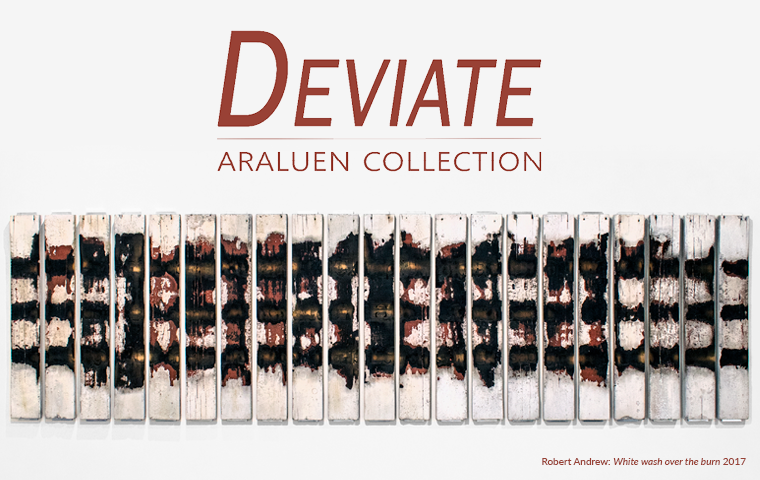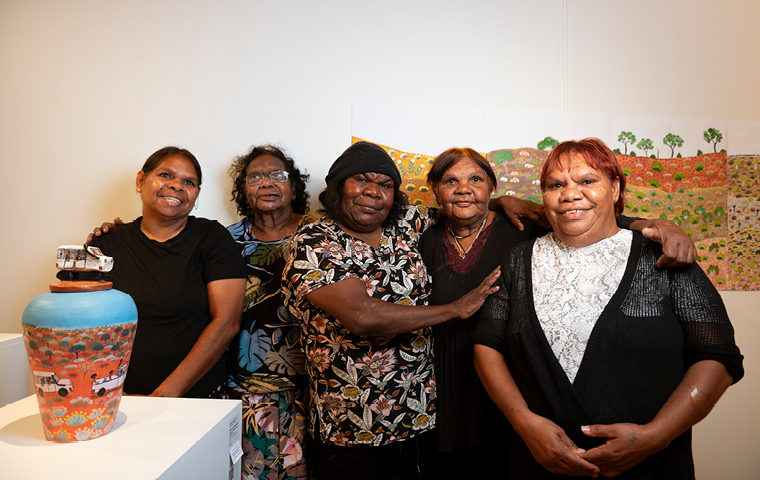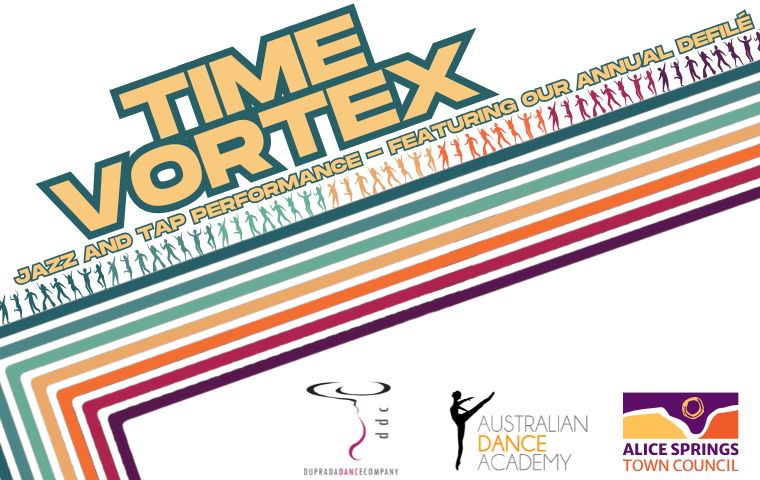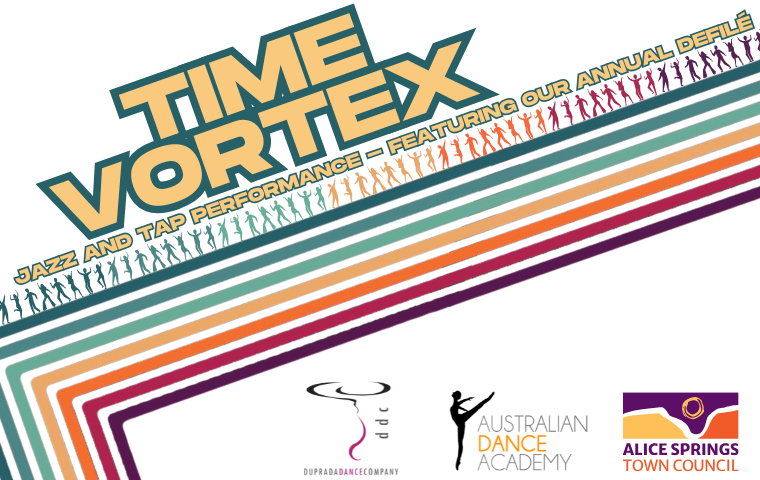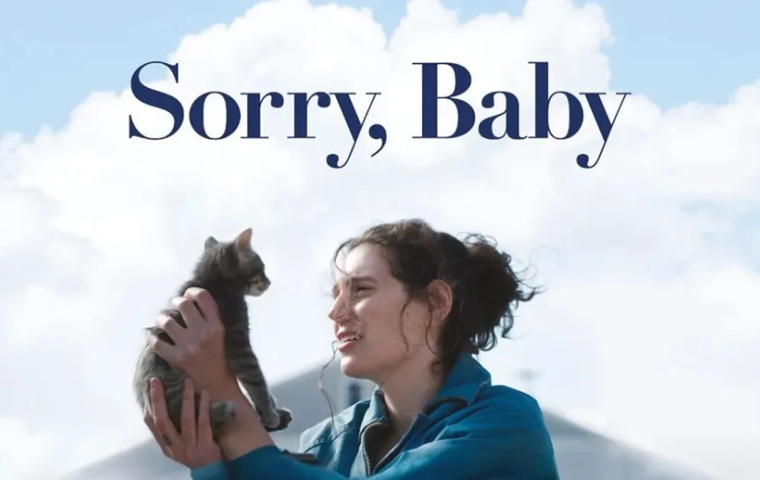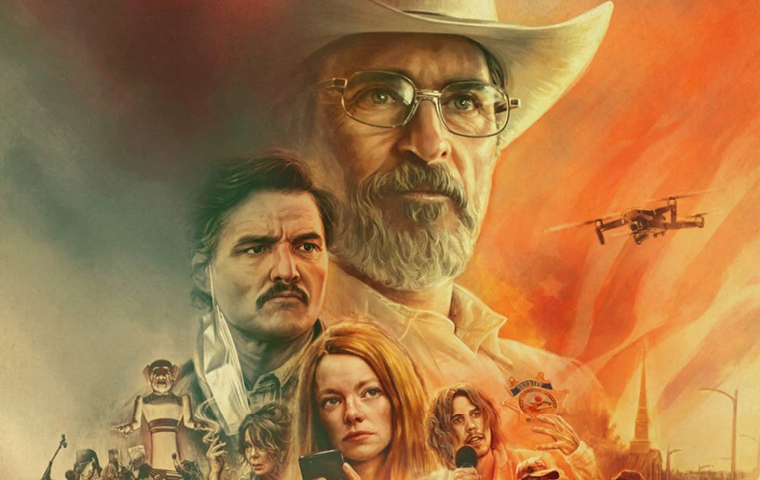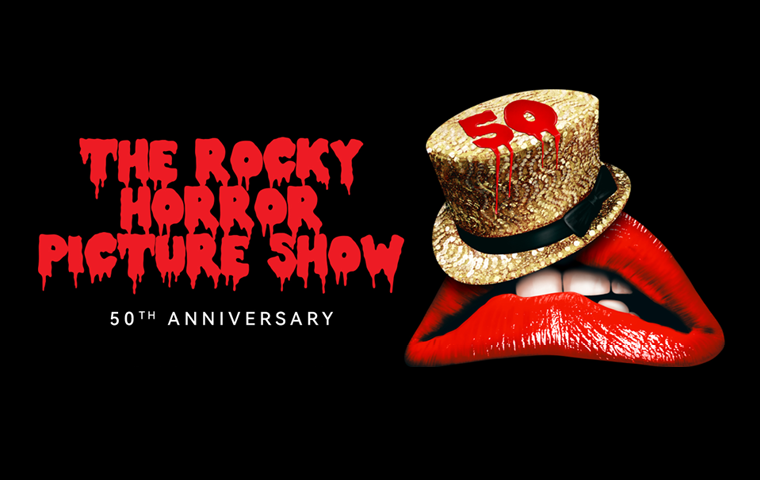Emily: I Am Kam
Celebrating the legacy of Australia’s most significant female artist - Emily Kam Kngwarray.
We travel with her descendants as they revive awely ceremonies and collaborate on a major retrospective exhibition, reaffirming her connection to Country.
Emily: I Am Kam celebrates the legacy of Emily Kam Kngwarray, one of Australia’s most significant and prolific female artists. An Anmatyerr woman and senior Law figure who believed her work had the power to protect her Country, Alhalker. Emily: I Am Kam questions what legacy and success look like for this extraordinary Aboriginal artist, revealing it’s so much more than the 3,000 or so paintings Kngwarray left behind.
She painted, because this act was tied to her cultural responsibilities to Alhalker and meant she could fulfil her obligations to her extended family in the Sandover homelands of the Northern Territory - but also simply because she loved to paint.
Featuring a visual feast of art works from across Kngwarray’s astonishing career including works selected by First Nations curators Hetti Perkins and Kelli Cole for the National Gallery of Australia’s major retrospective exhibition Emily Kam Kngwarray in 2024, this is an opportunity to gain real understanding of who Kngwarray was and why she painted.
Using precious audio interviews recorded in the 1980s and 1990s with Kngwarray in her Anmatyerr language by linguist Jennifer Green, and visuals, many which have never been seen before, we give Kngwarray the opportunity to speak for herself. For the very first time, Kngwarray and her female descendants carry us deep into her cultural and artistic life.
As Hetti and Kelli remember, “Kngwarray’s female descendants camped at Alhalker to dance and sing the awely (women’s ceremony) for their Country. Early in the camp, the women summoned a 40-year-old archival recording of Kngwarray’s songs. Played through a computer and small portable speaker, they were able to listen and check the sequence and texts of the Alhalker songs. Interjections between verses were offered by Kngwarray throughout the recording—remarking on Alhalker Country or noting the age of these cultural practices.”
Kngwarray’s journey began in 1914. It’s an epic story of 20th-century Australia—from her birth at Alhalker, 250 km northeast of Alice Springs; experiencing the frontier as a young girl and seeing a white person for the first time; to cultural custodianship. In the late 1970s, as a member of the Utopia Women’s Batik Group, she became, as she called herself, “the Boss of Batik,” and then, some 11 years later, transitioned to acrylic paint on canvas. In the last decade of Kngwarray’s life, she was ‘discovered’ as a ‘superstar’ of Australian art .
Her paintings have been exhibited in Australia, Asia, Europe and North America, and in the decades since her death in Alice Springs in 1996, her work continues to command record-breaking prices in the international art world.
She was a force to be reckoned with. As Dr Jennifer Green highlights: “She was a pioneer in her field, partly because of her unique aesthetic vision but also because of the force and eccentricity of her personality.” Emily’s work has, in many ways, provided a time capsule—a precious record - for those who have come after her.
In March 2023 as part of the process of curating the exhibition, Hetti, Kelli and Jennifer Green travel to the Utopia region to collaborate with Kngwarray’s extended family, the Alhalker and Anangker ladies. Tamarind Tree Pictures crew were there and filmed critical footage of the journey. A journey that carries us all the way with the ladies to a private viewing of the Emily Kam Kngwarray exhibition at the National Gallery of Australia.
“This is how the olden time people sang and danced,” Kngwarray says, before taking up the song again. Kngwarray’s words are echoed and affirmed by the women gathered at the camp. In the awely performance, Kngwarray’s strong voice transports across time providing a steadying accompaniment. Here, the audience is given a rare privilege; witnessing the presence of Kngwarray, in spirit and in voice.
With her countrywomen on her sacred land when they dance and sing a memorial to their ‘famous’ family member, a woman who held deep cultural knowledge. The final word on this great artist must be given to her descendants, the contemporary custodians of Alhalker who follow in her footsteps. They simply describe her art as arraty ilem - telling the truth.
“All the whitefellers would say, ‘That one over there is for me, that beautiful one there is for me. Give it to me, that one’s for me - give me that one!’......
Looking at the paintings they think, ‘That old lady keeps on painting her Country, that one place, Alhalker—the place where she lived for a long time.’
They think that the paintings are really wonderful - the Country itself.”
- Emily Kam Kngwarray
“If you close your eyes and imagine the paintings in your mind’s eye, you will see them transform. They are real – what Kngwarray painted is alive and true”
- Jedda Kngwarray Purvis, Jennifer Kngwarray Purvis and Josie Petyarr Kunoth, Utopia Art Centre, June 2023.
Images
1. Emily Kam Kngwarray and Jennifer Green recording songs and oral histories for CAAMA radio, Atnarar (Soakage Bore) 1983
2. Emily Kam Kngwarray near Mparntwe:Alice Springs after the first exhibition of Utopia batiks, 1980
3. Emily Kam Kngwarray preparing inap (echidnas) c 1978
4. Women dance towards seated singers
5. Women of Utopia dancing the emu awely
6. Emily Kam Kngwarray 1994
7. Emily Kam Kngwarray painting Delmore Downs Station c 1992
8. Anwerlarr (pencil yam root and leaf), Alhalker Country
9. Emily Kam Kngwarray 1994
10. Bush picnic, Utopia 1977, Pictured Jenifer Green, Pansy Sandover, Lily Kngwarrey Sandover, Andrew Sandover, Emily Kam Kngwarray, Betty Mpetyan, Julie Sandover and Rosemary Petyarr
11. Melissa Kngwarray Long viewing Kngwarray batiks at the NGA exhibition
12. Louisa Kngwarray Long painting Josie Petyarr Kunoth with awely designs.
13. Bathing at Urlerrperl waterhole
14. Barbara Kngwarray Long mixing ochres with fat
15. Judy Kngwarray Greenie and Jedda Kngwarray Purvis looking out toward the ranges in Alhalker Country
16. Painting the awely designs
17. The women dance the awely
18. Jennifer Kngwarray Purvis and Josie Petyarr Kunoth at Alharlernternerrek
19. Dancing the awely
20. Kngwarray Brushwork black and white 1994
20A. Emily Kam Kngwarray 1996
20B. Emily Kam Kngwarray 1996
20C. Emily Kam Kngwarray 1996
22. Josie Petyarr Kunoth arrives with Judy Kngwarray Greenie, Rosemary Petyarr other women of her community to preview the Kngwarray exhibition
23. The opening of the Emily Kam Kngwarray exhibition NGA December 2023, The artwork behind is A Summer Project 1988/89 - 80 works, Left to right Jean Kngwarray Long, Margaret Kngwarray Long, Kelli Cole, Louisa Kngwarray Long, Jedda Kngwarray Purvis, Back row Sophia Lunn, Dr Jennifer Green, Front Josie Petyarr Kunoth, Melissa Kngwarray Long
27. Alhalker Country
Written and Directed by DANIELLE MACLEAN
Produced by ANNA GRIEVE & DANIELLE MACLEAN
Emily: I Am Kam is a Tamarind Tree Pictures production for NITV in association with Screen Australia, National Gallery of Australia and Screen Territory.
Dates
Times
7pm
Duration
59 minutes
Interval
None
Prices
FREE (ticket booking still required)
Genre
Location
Extra information
Online ticketing is available up until one hour prior to the performance.
For ticket purchases after this time, please visit the Araluen Box Office or call us on (08) 8951 1122.
Accessibility
![]()
Rating

Warning
Aboriginal and Torres Strait Islander viewers are advised that the following program contains images and voices of people who have died.
Booking Fee
For this event, a one-off service fee of $2.50 per transaction applies on all purchases online. All ticket prices include GST.
 Araluen Arts Centre:
Araluen Arts Centre: 

